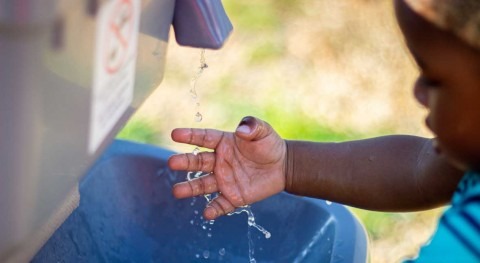Water and sanitation companies must become more productive and efficient to meet the challenges ahead, as pressures on water resources increase in the face of rapid urbanisation and climate change. New approaches, technologies and solutions are needed to move away from business as usual: this is where employee diversity can provide fresh perspectives to help utilities shape the future and achieve their goals.
A new study by The World Bank looks into the barriers women face in the water sector, where less than one in five workers are women, and identifies interventions companies can adopt to increase gender diversity. Women are an untapped pool of talent for the water sector. The low number of women in water-related technical roles reflects their overall exclusion from that type of jobs in the broader labour market.
Even so, the proportion of female water professionals has grown in the past few years, at the same time as water companies are evolving. For example, modern utilities are more customer oriented, so new departments have emerged such as customer service divisions, and more diverse sets of skills are required. Moreover, jobs that used to require physical strength no longer do, thanks to technology and digitization.
The study highlights that increased women participation in the water sector benefits women, but also the companies themselves. Private sector evidence indicates that gender-diverse companies tend to outperform less diverse ones. Furthermore, greater diversity leads to an expanded mix of skills, and in turn to greater innovation. As well, there are wider economic and financial benefits at the national level when women have access to better jobs. In fact, inequality has been estimated to cause losses in human capital wealth globally that amount to US$160.2 trillion. Studies show that GDP goes up when women participate more in the workforce. In OECD countries, a 50% reduction in the gender gap in labour force participation would lead to an additional gain in GDP of about 6% by 2030.
The report uses a career cycle framework divided into four stages: attraction, recruitment, retention and advancement. At each stage, barriers and promising approaches are identified for water companies who want to improve their gender diversity.
- Attraction. Some key constraints to women’s participation in the water industry are related to broad societal challenges, including gender stereotypes and the low proportion of women that graduate from STEM fields (science, technology, engineering and mathematics). The lack of female role models also contributes to few women being attracted to the sector. Initiatives to overcome this could involve outreach programs for schools, scholarships for women in STEM, or introducing technical and training programs that target women.
- Regarding recruitment, women face biased hiring processes. They are not usually targeted in school-to-work transitions, and male applicants are often favoured over female candidates. Options to address the recruitment bias are ensuring job descriptions are gender-neutral, removing gender markers from application documents, gender-diverse hiring panels, and diversity targets.
- In terms of retention, women leave water companies at a higher rate than men due to discrimination in the workplace and lack of gender-sensitive policies. Utilities can address this issue introducing family-friendly policies such as flexible work arrangements, mechanisms to protect women from sexual harassment, and improving facilities, e.g. providing separate toilets by gender, changing rooms, etc.
- Finally, female employees are often not given the same opportunities to advance in their careers than their male counterparts. Women sometimes report they must work especially hard to prove they are as capable as men or that they are ready for more levels of responsibility. Measures such as mentorship and networking programs, female leadership programs, succession plans that are inclusive of women, and targets for gender composition in leadership positions can contribute to having more women in managerial positions.
To sum up, the study stresses that any company interventions to increase female participation must be targeted and tailored to address the barriers women face in each specific context, and be supported by a enabling environment at the national and sector level, with gender-friendly policies such as maternity/paternity leave options that allow women to compete with men on equal footing.








